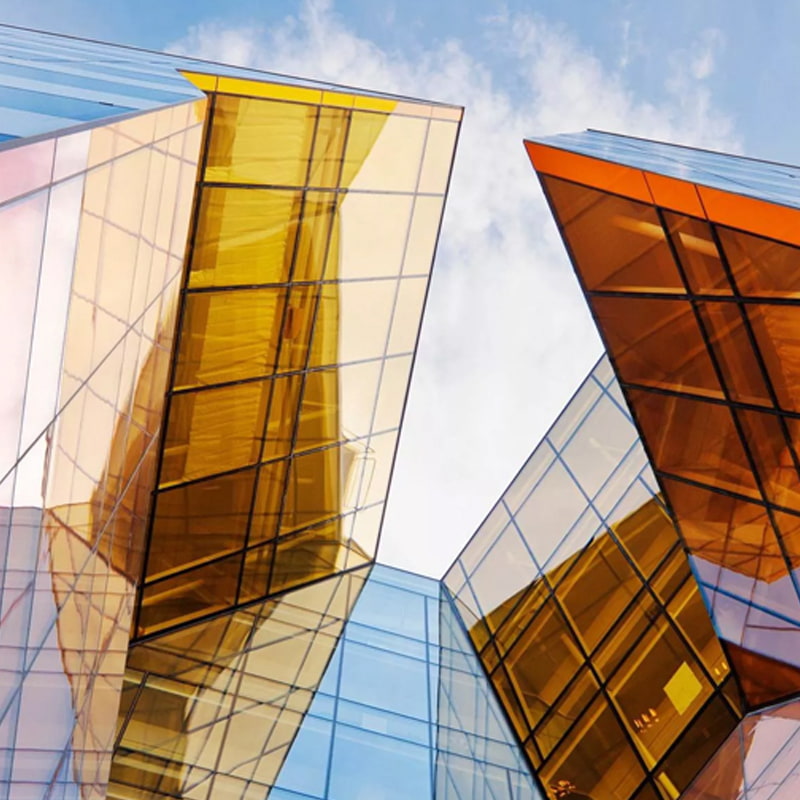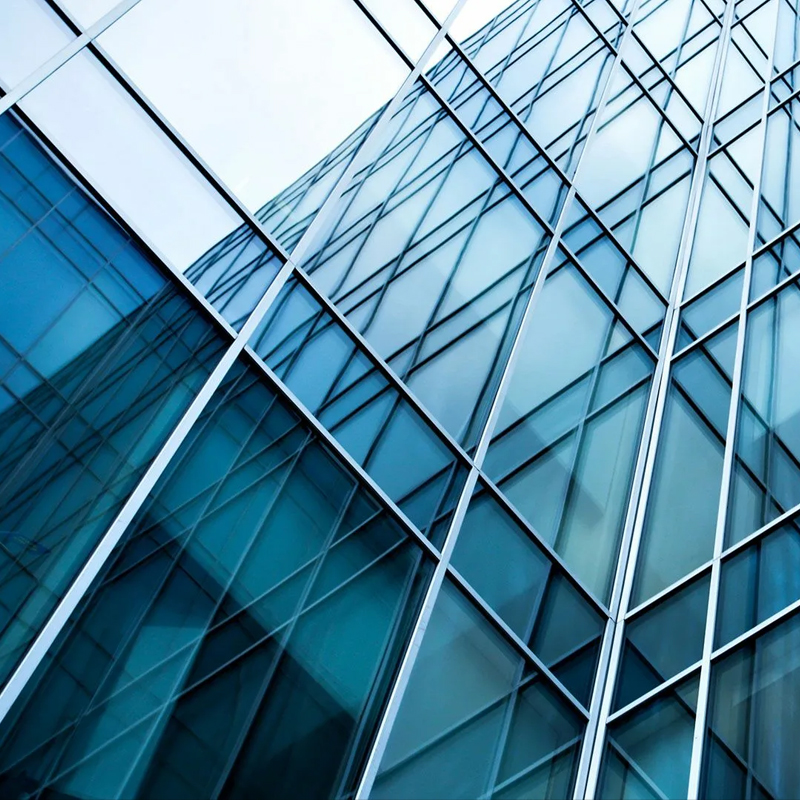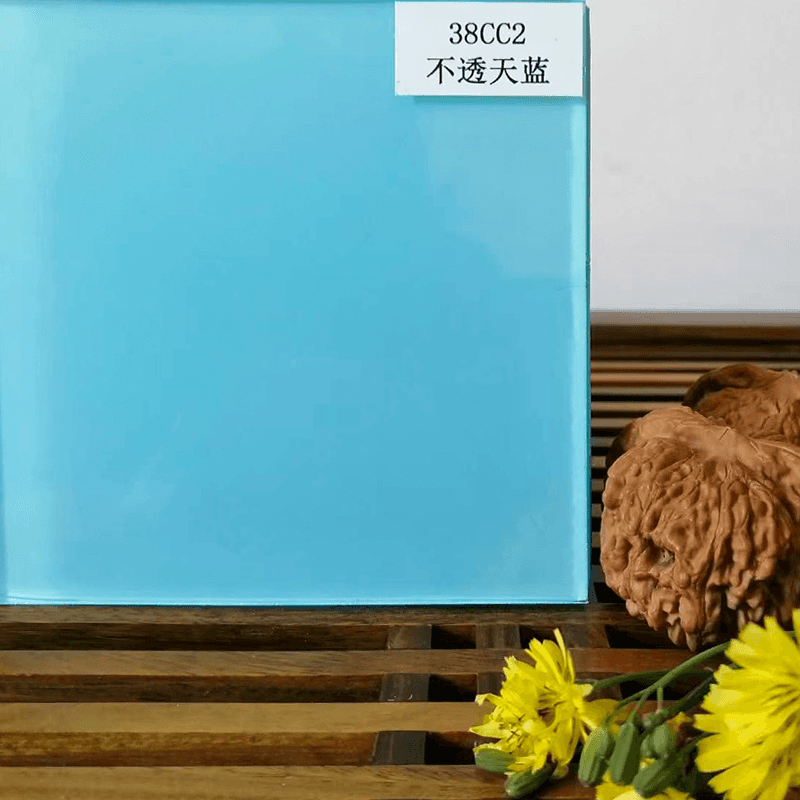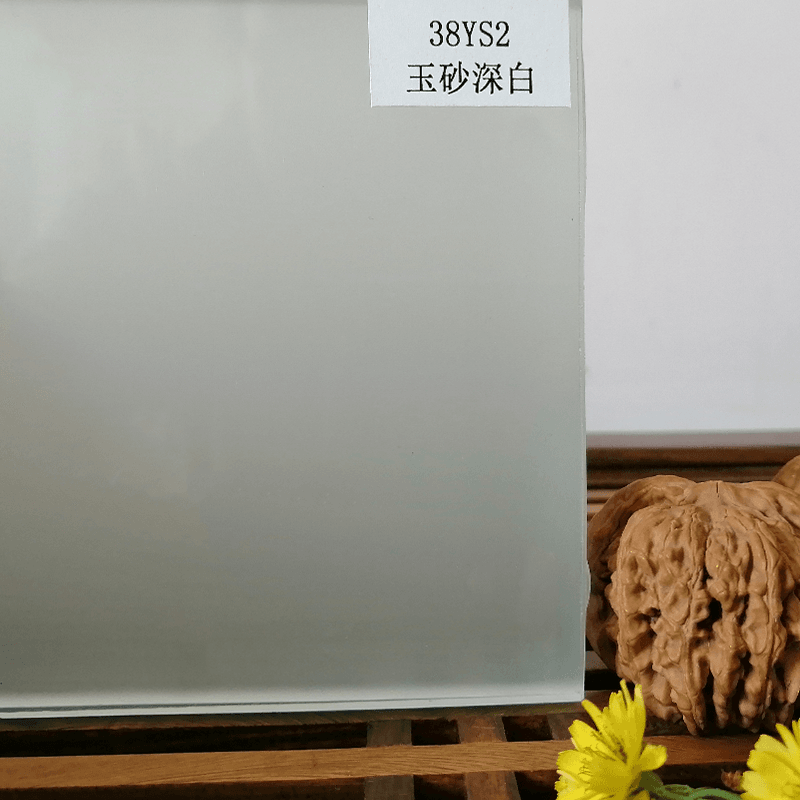language
In the vast field of modern materials science, PVB interlayer film is like a brilliant star. Although it seems ordinary, it plays an irreplaceable role in many key areas. With its unique chemical structure and outstanding physical properties, it has become the core material for laminated glass manufacturing, bringing a brand-new experience of safety, energy conservation and comfort to the construction, automotive, photovoltaic and other industries. From the sturdy curtain walls of high-rise buildings to the windshields of cars, from solar photovoltaic modules to the precise optical components of aerospace equipment, PVB interlayer films are everywhere, silently safeguarding people's lives and safety.
The essence of the PVB interlayer
Chemical composition
PVB intermediate film, the full name of which is polyvinyl alcohol butyral intermediate film, is mainly composed of polyvinyl alcohol butyral (PVB) resin. This polymer compound is produced by the condensation reaction of polyvinyl alcohol and butyraldehyde under the catalysis of strong acid, and its molecular structure contains a large number of hydroxyl (-OH) groups. These hydroxyl groups endow PVB resin with special chemical activity, enabling it to form strong hydrogen bonds with various materials, especially the silanol groups on the glass surface, thereby achieving powerful bonding performance. During the production process, PVB resin needs to be plasticized with specific plasticizers. Commonly used plasticizers such as 3G8 (triethylene glycol diisooctanoate) have good compatibility with PVB resin and can effectively improve the flexibility, cold resistance and heat resistance of PVB intermediate films. Plasticizer molecules are inserted between the molecular chains of PVB resin, weakening the interaction forces between the molecular chains. This enables the film to maintain good flexibility and plasticity under different temperature conditions, ensuring that it can closely adhere to the glass surface during the manufacturing process of laminated glass and achieve perfect bonding.
Production process
The production process of PVB intermediate film is complex and meticulous, with extremely high requirements for equipment and technology. First, mix the PVB resin with plasticizers and other additives in an exact proportion, stir it evenly at high speed, and then send it into the extruder. In the extruder, the material is melted and plasticized under high temperature and high pressure, and then extruded into a film blank through a precision mold. Subsequently, the film blank enters the casting device and, under specific temperature and humidity conditions, is rapidly cooled and set through the cooling roller to form the initial PVB intermediate film product with a certain thickness and width. The initial products still need to go through multiple quality inspection and post-treatment processes, such as surface flatness inspection, thickness uniformity adjustment, and winding and packaging. During the production process, precise control of parameters such as temperature, pressure and humidity is of vital importance. Any minor deviation may affect the final performance of the film, such as adhesion, transparency and flexibility. Advanced production equipment and a strict quality control system are the keys to ensuring the high quality of PVB intermediate films.
The outstanding performance of PVB intermediate film
Strong bonding performance
One of its core properties is that the PVB interlayer has an extremely strong adhesion to inorganic glass. When the PVB interlayer is combined with glass under high temperature and high pressure, the hydroxyl groups in its molecules interact with the silanol groups on the glass surface through hydrogen bonds, forming a strong chemical bond that closely adheres the two layers of glass together. This powerful adhesive force ensures that when laminated glass is subjected to external impact, even if the glass breaks, the fragments will be firmly adhered by the PVB interlayer film and will not fly around, effectively avoiding harm to personnel and greatly enhancing the safety of the glass. In the field of architecture, PVB laminated glass is used for the exterior Windows and glass curtain walls of high-rise buildings, which can effectively resist the impact of natural disasters such as strong winds and earthquakes, ensuring the safety of people inside the buildings. In the automotive industry, PVB laminated glass is used for car windshields, which can maintain the integrity of the glass in collision accidents and provide a reliable safety barrier for drivers and passengers.
Excellent optical performance
PVB interlayer film has excellent optical performance. Its visible light transmittance is extremely high, usually reaching over 70%, and its haze is very low, generally below 0.3%. This enables PVB laminated glass to have a clear field of vision without obvious distortion, providing people with a good visual experience. In architecture, large areas of glass skylights and floor-to-ceiling Windows are made of PVB laminated glass, allowing the interior to fully enjoy natural light and creating a bright and comfortable space environment. In the automotive field, high-quality PVB laminated glass is used for the front windshield, ensuring that drivers have a clear view without being disturbed by the optical properties of the glass and enhancing driving safety. In addition, through special formulas and process adjustments, PVB intermediate films can also achieve the filtering or reflection of light of specific wavelengths, such as ultraviolet blocking function. PVB intermediate film can effectively absorb or reflect ultraviolet rays in sunlight, with a blocking rate of over 99%. It can prevent indoor furniture, decorations, textiles, etc. from fading and aging due to ultraviolet radiation, and also protect people's skin from ultraviolet damage.
Good physical properties
PVB interlayer film possesses outstanding physical properties, enabling it to adapt to various complex environments. In terms of heat insulation, by adding nano heat insulation media and other technical means, the PVB intermediate film can effectively block infrared rays and reduce heat transfer. When applied to architectural glass, it can prevent outdoor heat from entering the room in summer, reducing the energy consumption of air conditioners. In winter, it can prevent the loss of indoor heat and play an insulating role. Combined with high light transmittance, it achieves a perfect balance between "shading" and "lighting" for building glass, helping green buildings achieve energy-saving goals. In terms of sound insulation, the PVB interlayer has a good damping effect on sound vibration. By optimizing the membrane layer structure, its blocking effect on medium and high-frequency noise can be improved by 30%. By combining glass of different thicknesses, PVB laminated glass can reduce external noise to below 40 decibels, creating a quiet and comfortable environment for urban residences, offices, schools and other places, and effectively isolating noise interference from traffic and industry. In terms of weather resistance, PVB intermediate film has excellent resistance to high and low temperatures as well as moisture. Its performance remains stable in extreme temperature environments ranging from -40 ℃ to 80℃, and the shelf life is up to 2 years. This enables PVB laminated glass to maintain excellent performance under various climatic conditions, whether it is the cold northern regions, the hot and humid southern regions, or the special environments with high altitudes and strong ultraviolet rays, it can be reliably used.
The wide application of PVB interlayer
The field of architecture
In the field of architecture, PVB interlayer plays a crucial role. In terms of glass curtain walls, with the continuous improvement of modern buildings' requirements for aesthetic appearance and safety, PVB laminated glass curtain walls have become the first choice for many large-scale buildings. It not only has excellent lighting performance, allowing the interior of the building to be filled with natural light, but also has outstanding impact resistance, capable of withstanding the attacks of natural disasters such as strong winds and hail. Meanwhile, by choosing PVB intermediate films of different colors and textures, diverse architectural exterior designs can also be achieved, meeting the creative demands of architects. In the application of doors and Windows, PVB laminated glass doors and Windows can effectively enhance the sound insulation and heat insulation effects of buildings. The sound insulation performance can protect the interior from external noise interference, creating a quiet rest environment for the residents. The heat insulation performance helps regulate the indoor temperature, reduce energy consumption and achieve energy conservation in buildings. In addition, the safety of PVB laminated glass doors and Windows also provides a reliable guarantee for families, preventing the occurrence of glass breakage and injury accidents. In terms of skylights and skylights, PVB laminated glass has excellent light transmittance and structural strength, can withstand large loads, and can effectively prevent the glass from falling, ensuring the safety of people below. It can also effectively control the light intensity and ultraviolet rays by adjusting the performance of the PVB interlayer, creating a comfortable lighting environment for the indoor space.

The automotive field
In the automotive industry, PVB interlayer film is a key material for the manufacturing of automotive glass. In the application of front windshields, PVB laminated glass is the standard configuration for the front windshields of automobiles. In collision accidents, the PVB interlayer film can absorb a large amount of impact force through its own elastic deformation, preventing glass fragments from flying and causing harm to drivers and passengers. At the same time, when used in conjunction with tempered glass, it can significantly enhance the anti-penetration ability of the front windshield, effectively protecting the safety of the occupants inside the vehicle. PVB laminated glass is also widely used in side and rear window glass. It not only provides excellent sound insulation, reducing the entry of external noise into the vehicle and enhancing driving and riding comfort, but also improves the safety of the glass, preventing it from breaking and injuring people in unexpected situations. With the development trend of automotive intelligence and lightweighting, PVB intermediate films are also constantly innovating. For instance, the dedicated PVB intermediate film designed for the side Windows of electric vehicles has a stiffness 20% to 40% higher than that of standard films, allowing for the use of thinner glass and achieving lightweighting of the vehicle body. At the same time, the high-frequency noise damping is enhanced, balancing the requirements of lightweighting and quietness, and helping electric vehicles extend their driving range. In addition, some high-end car models have begun to apply PVB intermediate films with electronic dimming functions. These films can change the light transmittance of the glass through electronic control to meet the needs of different driving scenarios. For instance, they can reduce the light transmittance in strong light to protect the driver's eyes and increase it at night or when privacy is required.
The photovoltaic field
In the photovoltaic industry, PVB intermediate films play a significant role as encapsulation materials for photovoltaic modules. In double-glass photovoltaic modules, the PVB interlayer is located between the two pieces of glass, encapsulating the solar cells within. Its high light transmittance (≥90%) can ensure sufficient sunlight passes through, providing good lighting conditions for the solar cells, promoting photoelectric conversion, and increasing the power generation efficiency of the module by 3% to 5%. Meanwhile, the PVB interlayer film has excellent aging resistance, which can effectively protect the solar cells from erosion by external environmental factors such as ultraviolet rays, moisture, and temperature changes, extending the service life of photovoltaic modules to over 25 years and ensuring the long-term stable operation of photovoltaic power stations. The PVB interlayer film also has excellent electrical insulation performance, which can prevent leakage between solar cells and ensure the electrical safety performance of photovoltaic modules. In Building Integrated Photovoltaic (BIPV) projects, PVB laminated photovoltaic glass not only realizes the function of photovoltaic power generation but also can be used as part of the building envelope, combining aesthetics and practicality, providing an innovative solution for building energy conservation and the utilization of renewable energy.
Other special fields
In the aerospace field, specially formulated PVB films are used in aircraft windshields, which can withstand extreme temperature differences and strong air flow impacts, ensuring the pilots' clear vision and flight safety. It is used for missile observation and aiming Windows, which can maintain stable optical performance in complex environments and ensure precise guidance. In the military field, PVB laminated glass is widely used as protective glass for military vehicles and observation Windows for military facilities due to its excellent bulletproof and explosion-proof performance, providing reliable safety protection for military operations. In museums, art galleries and other places, PVB laminated glass is used for display cabinets, Windows, etc. It can not only effectively protect the exhibits from ultraviolet damage, prevent fading and aging, but also provide good display effects and safety protection, preventing the exhibits from being stolen or damaged.
The current situation and future of the PVB intermediate film industry
Current market situation
At present, the PVB interlayer film industry is showing a vigorous development trend. Construction and automobiles, as two major application fields, have greatly driven market demand. In the field of architecture, with the global popularization of green building concepts and increasingly strict building energy-saving standards, PVB laminated glass, with its excellent properties such as impact resistance, sound insulation, heat insulation and energy conservation, is being used more and more widely in new buildings. Not only that, in existing building renovation projects, to enhance the safety and energy efficiency of buildings, the usage of PVB laminated glass is also growing rapidly, which has strongly driven the market demand for PVB interlayer film. In the automotive field, to enhance the driving range, new energy vehicles have put forward higher requirements for the lightweighting of the vehicle body and the heat insulation performance of the glass. Meanwhile, consumers' attention to the safety performance of automobiles is constantly increasing. Coupled with increasingly strict regulations and standards, the application of PVB laminated glass in automotive windshields and side Windows has become more widespread. It further expanded the market share of PVB interlayer films. In addition, emerging markets such as those along the Belt and Road Initiative are experiencing vigorous infrastructure development, with a strong demand for architectural glass and automotive glass. These have become key markets for domestic PVB intermediate film enterprises to explore, and the volume of export orders has continued to rise.
Trends in technological innovation
Technological progress has driven the development of PVB interlayer from the traditional single safety function to multi-functionality. In terms of heat insulation function, by optimizing the formula and adding special heat insulation materials, the heat insulation PVB intermediate film applied to architectural glass can reduce air conditioning power consumption by 15% to 20% in summer, and when used in automotive glass, it can improve fuel economy. In terms of sound insulation function, the PVB interlayer film with a unique multi-layer structure and sound-absorbing materials inserted can reduce outdoor incoming noise by 20-30 decibels in buildings and significantly reduce driving noise in cars. Recently, some enterprises have also developed antibacterial and antifungal PVB interlayers. By adding antibacterial agents, they can effectively inhibit the growth of bacteria and mold in glass interlayers. They are particularly suitable for places with high hygiene requirements such as hospitals and food processing workshops, and have huge market potential. With the continuous advancement of technology, intelligent PVB film has become a new research and development hotspot. For instance, electrochromic PVB film can dynamically adjust the transparency of glass, meeting the requirements for light and privacy in different scenarios. The defrosting special film with integrated heating wire can quickly defrost and defog in cold weather, enhancing driving safety. Hud-enhanced PVB film can be better adapted to the car head-up display system, providing clear information display.
Challenges and opportunities faced
Although the PVB interlayer film industry has a promising future, it also faces some challenges. On the one hand, the fluctuation of raw material prices brings pressure to the cost control of the industry. The prices of raw materials such as PVB resin and plasticizers are greatly influenced by factors such as the supply and demand relationship in the international market and crude oil prices. The unstable prices increase the difficulty of enterprise production cost management. On the other hand, market competition is becoming increasingly fierce. Many domestic and foreign enterprises have entered the PVB intermediate film production field, and the phenomenon of product homogenization is rather serious. Enterprises need to constantly improve product quality and innovation capabilities to stand out in the market competition. However, challenges and opportunities coexist. With the advancement of the "dual carbon" goals, the improvement of building energy-saving standards and the rapid growth of the penetration rate of new energy vehicles (with a market share exceeding 30% in 2024) have brought huge development opportunities to the PVB interlayer film industry. The rise of emerging industries such as smart buildings, smart homes, and smart vehicles has led to a sharp increase in demand for PVB intermediate film products that are intelligent and multi-functional. If enterprises can seize the opportunity, increase investment in research and development, and launch innovative products that meet market demands, they will gain a favorable position in future market competition.
Conclusion
PVB intermediate film, this seemingly thin and light film material, plays an indispensable role in various fields of modern society with its outstanding performance and wide application. From ensuring building safety and energy conservation to enhancing the safety and comfort of car driving, and then to supporting the development of the photovoltaic industry and aerospace and military applications, PVB interlayer film shoulders multiple missions of safety, comfort and energy conservation. With the continuous innovation of technology and the sustained growth of market demand, the PVB intermediate film industry will embrace a broader space for development. In the future, we have every reason to expect PVB interlayers to shine even more brightly in the field of materials science and create a better living environment for humanity.





